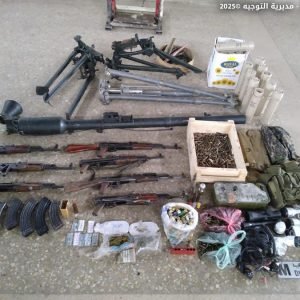
Raytheon, a subsidiary of the US defence industrial prime RTX, has reached full-rate production of the latest Standard Missile 3 (SM-3) iteration, Block IIA.
Now that manufacturing capacity is operating fully at the company’s facilities in Tucson, Arizona and Huntsville, Alabama, the US Missile Defense Agency (MDA) has allocated nearly $2bn for the acquisition of the new generation ballistic missile interceptors in July 2024.
This work will take place over the next seven years; the company stated that production will conclude on 28 February 2031.
Naval Technology has contacted the prime for details regarding the level of capacity and the number of units anticipated per year, however the company did not comment by the time of publishing.
Nevertheless, the “SM-3 Block IIA is a testament to the continuing partnership with Japanese industry to mature ballistic missile defence capabilities for the defence of our nation and our allies around the globe,” remarked Barbara Borgonovi, president of Naval Power at Raytheon.
US-Japan endeavour
SM-3 Block IIA was designed in cooperation with Japan; the first unit was tested in 2017. This latest iteration contrasts with the US-produced Block IB variant, which was first launched from an Aegis Ashore testing site in 2014.
Access the most comprehensive Company Profiles
on the market, powered by GlobalData. Save hours of research. Gain competitive edge.

Company Profile – free
sample
Your download email will arrive shortly
We are confident about the
unique
quality of our Company Profiles. However, we want you to make the most
beneficial
decision for your business, so we offer a free sample that you can download by
submitting the below form
By GlobalData
Notably, the US is in the middle of kitting out the Japanese Maritime Self-Defense Force with two guided missile destroyers enabled by Aegis Ballistic Missile Defence – an integrated network of sensors, interceptors and command & control.
Japan is in the process of procuring the SM-3 Block IIA as its interceptor given it is a fellow industrial partner in the programme. Previously, the Japanese government committed $308.4m (Y47.5bn) in Foreign Military Sale funds in July as part of the total $2bn sum.
The interceptor
The new interceptor has two distinct new features: larger rocket motors that enable the system to defend broader areas from ballistic missile threats and a larger kinetic warhead.
Likewise, the kinetic warhead – which destroys a target with sheer force rather than an explosive weapon – has been enhanced, improving the search, discrimination, acquisition and tracking functions, to address advanced and emerging threats.
Raytheon compared the defensive weapon’s ‘hit-to-kill’ technique to intercepting a bullet with another bullet. The missile hits threats with the force of a 10-tonne truck travelling at 600 miles per hour.








